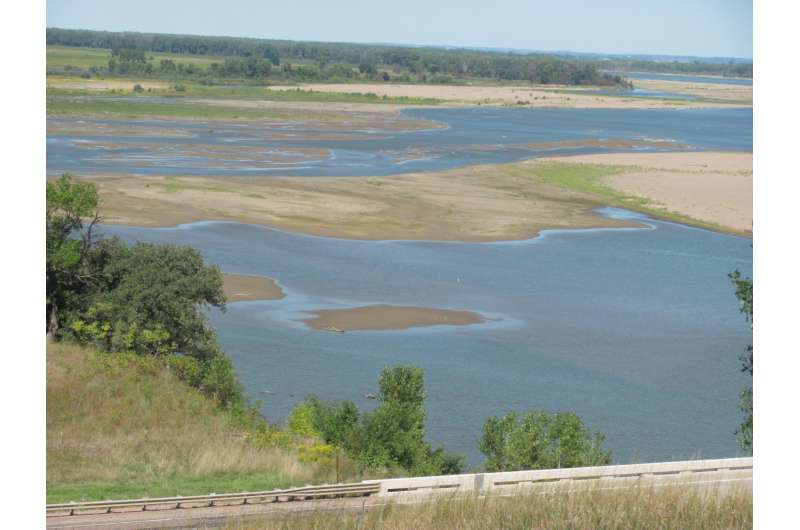Credit: University of Illinois at Urbana-Champaign
As the Missouri River flows across the Great Plains to where it meets the Mississippi River at St. Louis, it accumulates such a large sediment load that it has earned the nickname "Big Muddy." A recent University of Illinois study looks at the history of the river, damages and changes from the 2011 flood, and its current post-flood condition. The study concludes that the river needs a comprehensive plan with multi-state cooperation.
"Flooding, particularly near infrastructures, residences, and cropland can be extremely destructive. We see it again and again, and continue to observe the damaging effects to the river and surrounding landscape from the 2011 flood—erosion and sedimentation," says U of I researcher Ken Olson. He and his colleague from Iowa State University, Lois Wright Morton, have studied the seasonal Mississippi River and tributary flooding for over a decade.
Olson has observed much of the damage firsthand.
"The Missouri River and its tributaries are dynamic and continually changing, moving coarse stones, gravels, sands, and silts," Olson says. "Its power caves in streambanks and erodes river islands, and redeposits them further downstream. When the river overflows its banks, it carries the soils from the floodplain and eroded upland agricultural soils down-stream creating sand dunes, mud flats, and deltas."
Olson cites human activity as a contributing factor to the changes in the river. "Dams on Missouri River tributaries have changed rural livelihoods and the economics of the basin by reducing downstream flooding, generating hydro-electric power, and irrigating agricultural crops," he says. "These river structures and levees have increased the stream velocity that keeps sediments suspended but also during flooding increase peak flows in downstream areas. Balancing economic and environmental aspects of the river is a challenge continuing into the future."
Six dams, built in the 1940s and 60s on the main stem of the Missouri River couldn't control flooding in 2011. "There is a need for the Mississippi River Commission and the US Army Corps of Engineers to develop a Missouri River and upper Mississippi River plan similar to their lower Mississippi River and tributary plan to address both the upper Mississippi and Missouri river flooding and navigation issues," Olson says. "Such a plan is possible if the northern states adjacent to the Missouri and Mississippi rivers are willing to contribute and participate in the development of the management plan. This plan is essential to address the current waterway infrastructure restoration issues."
The study, "Sedimentation, navigation, and agriculture on the lower Missouri River," is written by Kenneth R. Olson and Lois Wright Morton. It appears in the Journal of Soil and Water Conservation.
More information: Kenneth R. Olson et al, Sedimentation, navigation, and agriculture on the lower Missouri River, Journal of Soil and Water Conservation (2017). DOI: 10.2489/jswc.72.4.80A
Journal information: Journal of Soil and Water Conservation
Provided by University of Illinois at Urbana-Champaign






















